The Lazier murder trial of 1884 – did they get the right men?
Sue Capon | Jul 14, 2014 | Comments 3
Story and photos by Sue Capon
The truth about the guilt or innocence of two men hanged in a double execution at Picton 130 years ago will never be known.
But Ontario Justice Robert Sharpe, who wrote a book about the bungled hanging in his boyhood town says all these years later, there are still lessons to learn from the case – about dispensing justice and the enduring problem of wrongful convictions.
Sharpe, author of The Lazier Murder, created a play from his book, which reconstructs and contextualizes the case using archival and contemporary newspaper accounts.
The play unfolded Friday in the same courtroom where the trial took place in May 1884. A packed courtroom – again – was in attendance, but this time it was to watch the historic case unfold as a fundraiser for the creation of a bronze sculpture of Sir John A. Macdonald presenting his first court case as a young lawyer in Picton (1834) in the very same courthouse.
Sharpe presided at the re-enactment as Justice Christopher Patterson. Justice Richard Byers played the role of Edwards Merrill, Mayor of Picton. William McDowell was defence attorney Dalton McCarthy Jr., and Patrick Hurley was prosecutor, Roger Clute.
In December 1883 Peter Lazier was shot to death during a bungled robbery Dec. 21, 1883 at a Bloomfield area farmhouse owned by Quakers Gilbert and Margaret Jones (played by Philip Knox and Elizabeth McIntyre).
The prosecution said the men came to rob Jones of the $555 he had been paid earlier that day for a load of hops. Lazier, a relative, was staying overnight.
The community was out for blood and the accused, Joseph Tompsett, 34 and George Louder (or Lowder), 23, were on trial in May by a jury of 12 local citizens. Tompsett was played by Julian Warrick and Louder by Matt Mercer.
Belleville Police Chief Hugh McKinnon (played by James Hurst) led the investigation trying to match crucial footprint evidence in the snow. Neighbours who had set out in the night trying to track the killers left a confusing pattern of as many as 12-15 different boot markings.
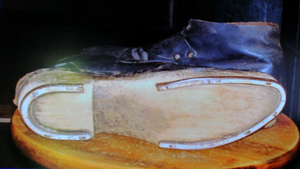 McKinnon compared the boots of the prisoners with the tracks. Tompsett’s matched, but Louder’s did not.
McKinnon compared the boots of the prisoners with the tracks. Tompsett’s matched, but Louder’s did not.
“A well-trained eye serves better than rulers or calipers,” testified Chief McKinnon. “I know a few things that are not written in books.”
Friday’s crowd jeered the defence and applauded the prosecution, just as they did in the courtroom 130 years ago. It was noted that although Patterson was considered to be a good judge, he failed at keeping decorum with a crowd that wanted the men convicted – as in the day, once the public had decided someone was guilty, there were few opportunities to change minds.
On May 10 the two were convicted and sentenced to death by hanging. They maintained their innocence to the end.
“I never new that fatal shot was fired nor that man was killed nor nothing of that murder nor my boots never made them tracks but the jury says I must die to pay some mans penalty. I am ready to die but I die for something I never don,” said Joseph Tompsett in a letter to his mother.
Louder said he “knew nothing of the affair. I was not present when the man was short and I am not a murderer at heart.”
The British Whig reported the men could hear their graves being dug by the workmen in the yard beyond their cells.
On June 10 at 7:56 a.m. the two were hanged on the newly constructed gallows. One died in five minutes, the other took 14 minutes to die.
The hangman’s bill was $40 plus $6.50 for “refreshments”.
Sharpe, in his book, says the community may have felt a collective sense of guilt that at least one innocent man had been hanged.
Following the re-enactment of the trial, local historian Peter Lockyer led a tour through the cells and gallows. He noted that though both men are supposed to be buried on site, there is a crude gravestone at Picton’s Glenwood Cemetery inscribed with Louder’s name and the words “Hanged. 1884. Unjustly.”
Filed Under: Local News
About the Author:



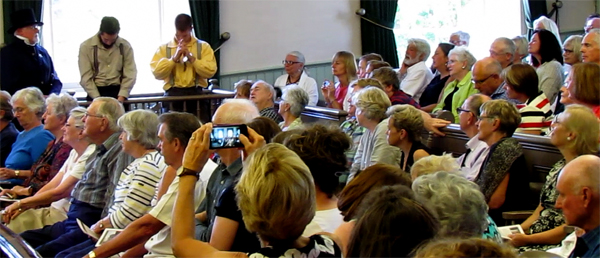
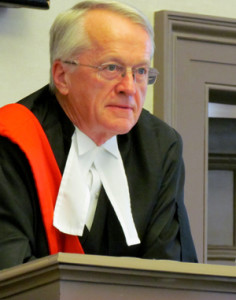
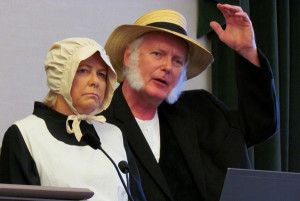
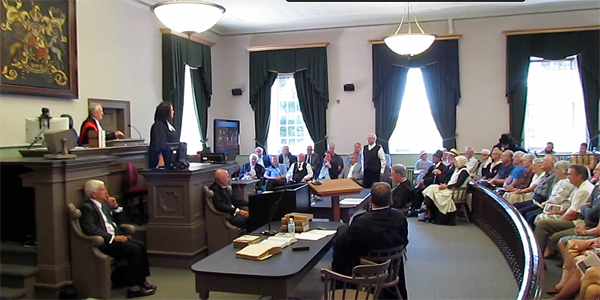
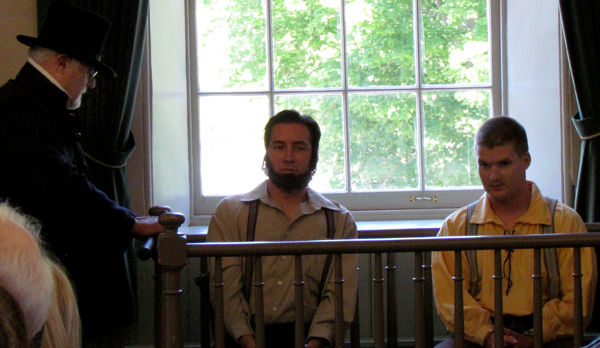
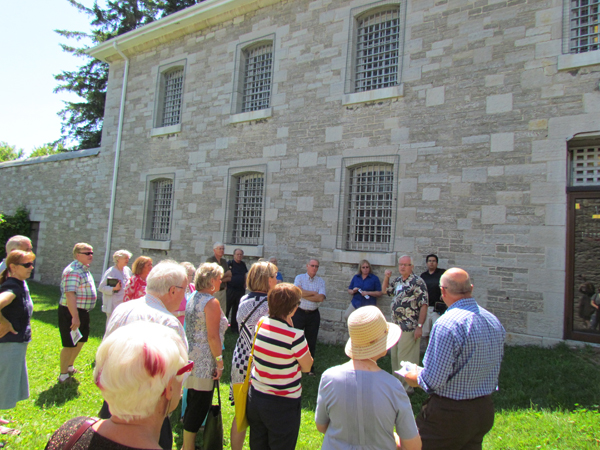
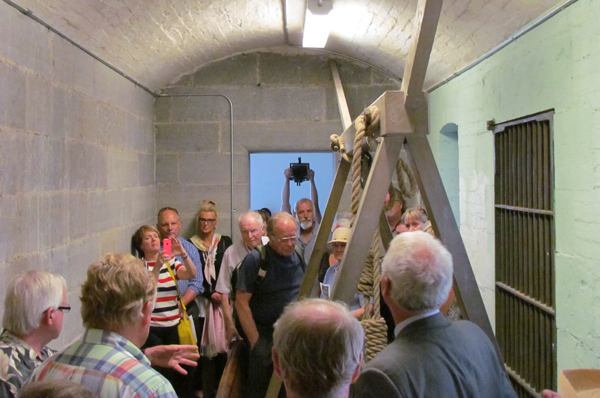






























A great event for a great cause. Kudos to David Warrick and all the members of the MacDonald project.
That is so cool!!!!
I so wish my Dad and Mom Sheila Calnan could have been there. My great grandpa Moore actually found those very boots decades after the murder. He found them hidden in the wall of an old house in Picton. Great grandpa had been hired to fix up this old house after there had been a fire. My Uncle Dale Calnan ended up with them and he lent them to Macauley House Museum for display.
Well done!
Great photos!!